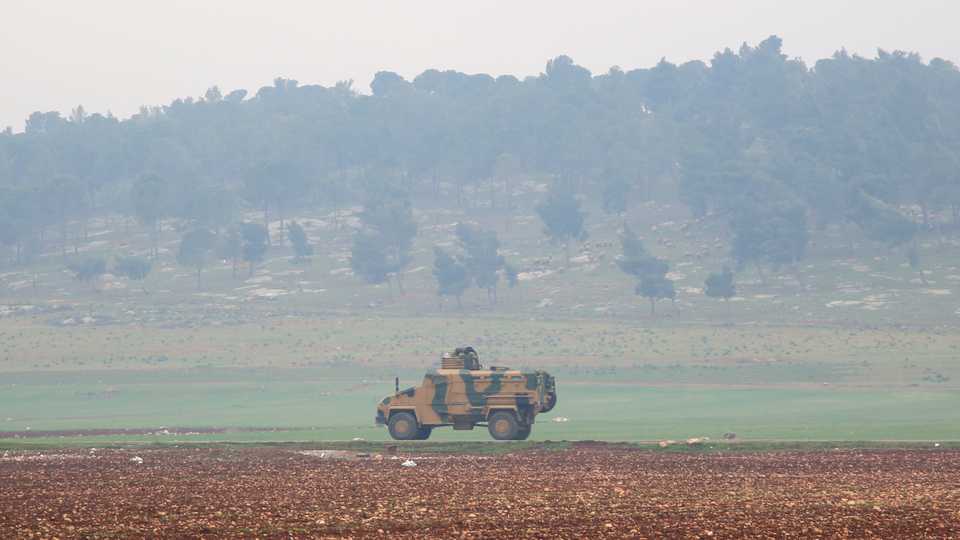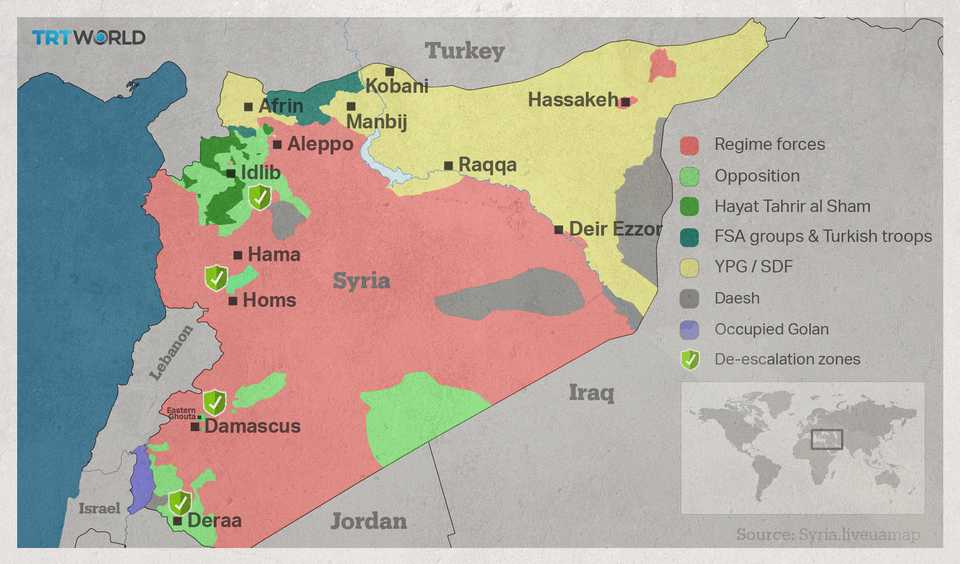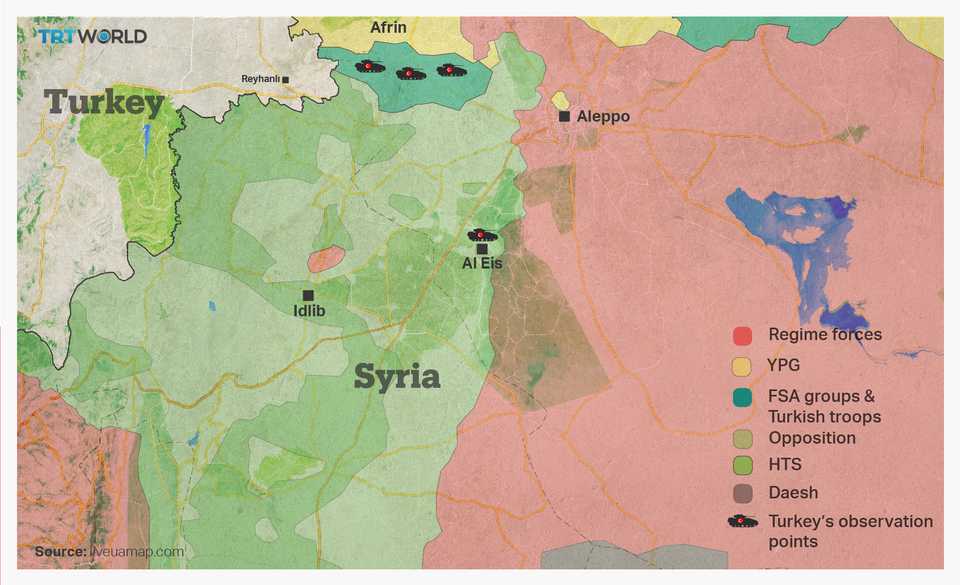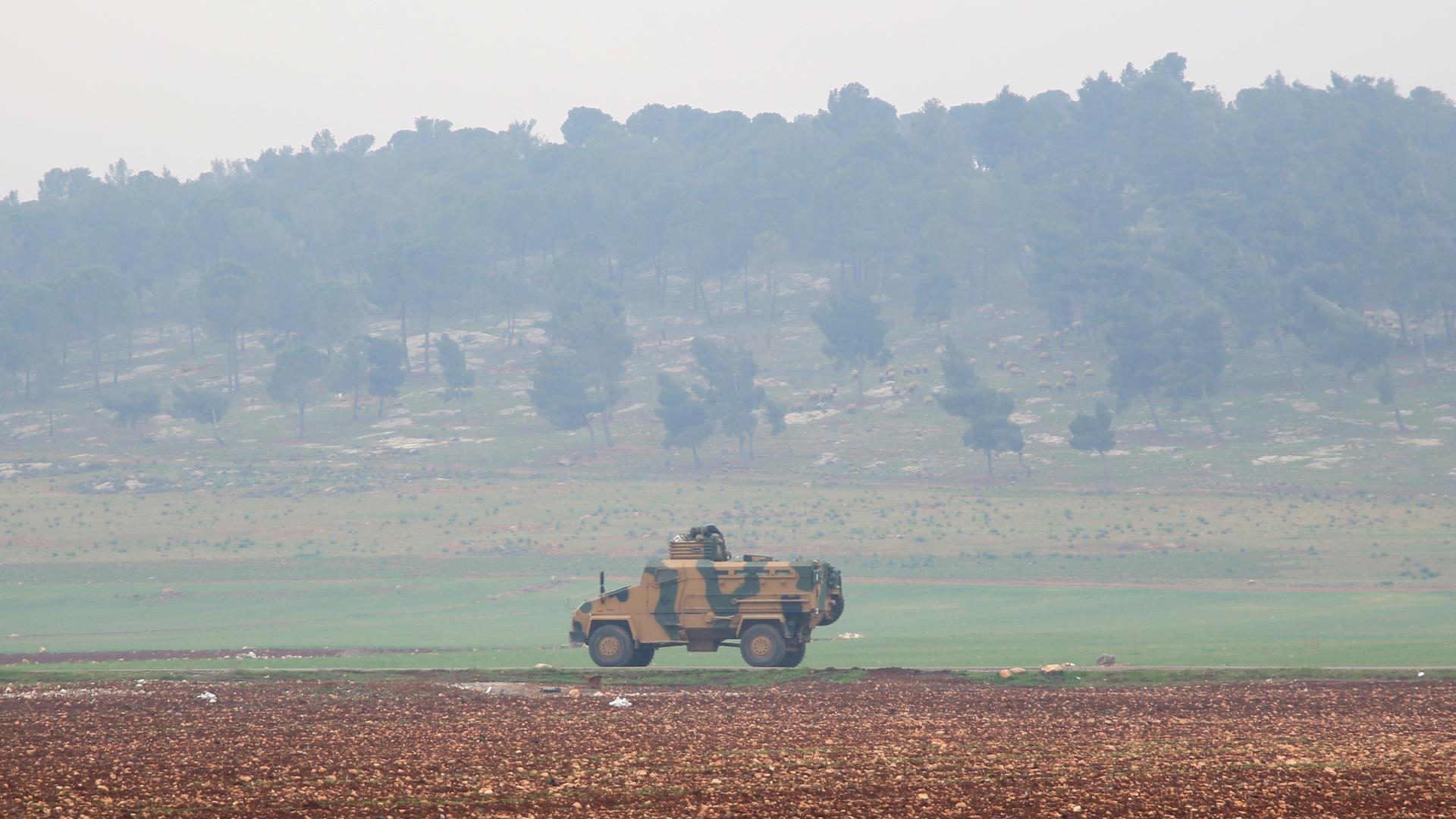
What is the purpose of observation posts in Idlib?
An observation post is where one of the guarantors of the Astana talks (Russia, Turkey and Iran) can keep track of the situation in certain areas.
During Syria’s peace talks in September in the Kazakh capital of Astana, the three guarantor countries agreed to establish de-escalation zones in Idlib, and in parts of western Aleppo, in northwest Latakia and in the northern Hama provinces.
According to that agreement, Turkey is set to gradually establish 12 observation posts to the north and east of Idlib.
These zones are aimed at sustaining the ceasefire in Syria, but also establishing suitable conditions to enable the delivery of humanitarian aid to the civilians in need, and facilitating the return of displaced people to their homes.

Why Idlib?
Idlib, located in northwestern Syria along the Turkish border, faced intense attacks by the Syrian regime after the civil war broke out in 2011.
Since March 2015, it was no longer under the control of the regime and was dominated by armed opposition groups.
After March 2015, Idlib was the focus of fighting between Russian and Iranian-backed regime forces, and Turkish-backed opposition forces until July. In July, Al Qaeda-affiliated Hayat Tahrir Al Sham (HTS), formerly known as Al Nusra Front, took control over a large part of the province.
It is home to hundreds of thousands of Syrians displaced by the war, including the ones who were evacuated from Aleppo after the regime took full control of the city in late 2016.
How many observation posts have been set up?
On October 12, the Turkish military started to establish observation posts in the north. Three observation posts in five engaged points were established by November 17.
Turkey set up these first three posts to the north of Idlib, which neighbours the YPG-held Afrin, in a bid to block the YPG from moving south. The YPG is the Syrian affiliate of the PKK, which is a designated terror group by Turkey, the US and the European Union.
The Turkish military started an operation in Afrin on January 20 to clear its borders from the YPG and Daesh. Afrin borders Turkey to the north and west, and the YPG there is considered a threat to its national security.
How is the fourth post different from the others?
The fourth observation post is different from the previous three because it is being set up in a strategically fragile area in western Aleppo, which is a part of the de-escalation zone agreed to by both Russia and Iran.
Iran-backed Shia militias are active in the east of Al Eis, and they are fighting against HTS and the opposition groups to claim more territory.
Therefore, this one is supposed to create a practical buffer zone between the Syrian opposition and regime forces backed by Shia militias, to prevent any clashes.

Why was Turkey late in creating the fourth post?
In January, weeks after Turkey set up the first three posts to the north, Russian airstrikes intensified in rural Idlib against the opposition groups and HTS. Ankara criticised Moscow for violating the de-escalation agreement.
On January 15, as a response to criticism coming from Ankara, Russian Foreign Minister Sergey Lavrov said that Moscow hoped for the quick deployment of all Turkish observation posts in Idlib.
“We do rely on our Turkish partners to finish establishing the remaining observation posts around the de-escalation zone in Idlib as soon as possible. They have so far established only three out of twenty, [twelve],” Lavrov said in a press conference.
Turkey accelerated its efforts for the fourth observation post and deployed a military convoy on January 30 to Al Eis, which is the frontline between the Shia militias, the regime and the opposition groups.
However, the convoy was attacked. The Turkish military said in an official statement that it was targeted by a “separatist terror organisation” by a car bomb, while it was moving in northern Idlib.
Turkish authorities usually use the definition “separatist terror organisation” when referring to the YPG/PKK.
One civilian personnel was killed, while one soldier and another civilian were wounded in the attack.
Later, Turkish President Recep Tayyip Erdogan and his Russian counterpart Vladimir Putin talked on the phone and agreed that Ankara would accelerate the process of setting up the observation posts.
On February 5, Turkey deployed a military convoy again to the same area in order to set up the fourth observation post. But it came under attack again. One soldier was killed, five others and a civilian personnel were injured, the Turkish Armed Forces said on Tuesday.
When will Turkey build the new zones?
Reconnaissance for a fifth and sixth observation post has begun, the Turkish Armed Forces announced on Monday.
Russia insisted on Turkey’s observation posts in western Idlib, and after the incidents, President Putin called his Iranian counterpart Hassan Rouhani on Tuesday. Putin underlined the importance of continuing the process, which was agreed upon during the Astana talks.
Mr Putin & Mr Rouhani discussed the results of the Syrian National Dialogue Congress, praised the effective cooperation between #Russia, #Iran and #Turkey within the Astana format and expressed readiness to continue working to further improve it https://t.co/Fo2g5FA6Ib pic.twitter.com/iJQEwqynyB
— RusEmbTurkey (@RusEmbTurkey) February 6, 2018
Turkish Foreign Minister Cavusoglu’s surprise visit to Tehran on Wednesday to meet with Iranian counterpart Zarif and President Rouhani is expected to speed up the process further.










Discussion about this post